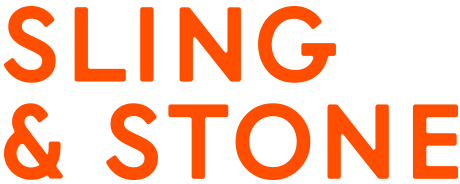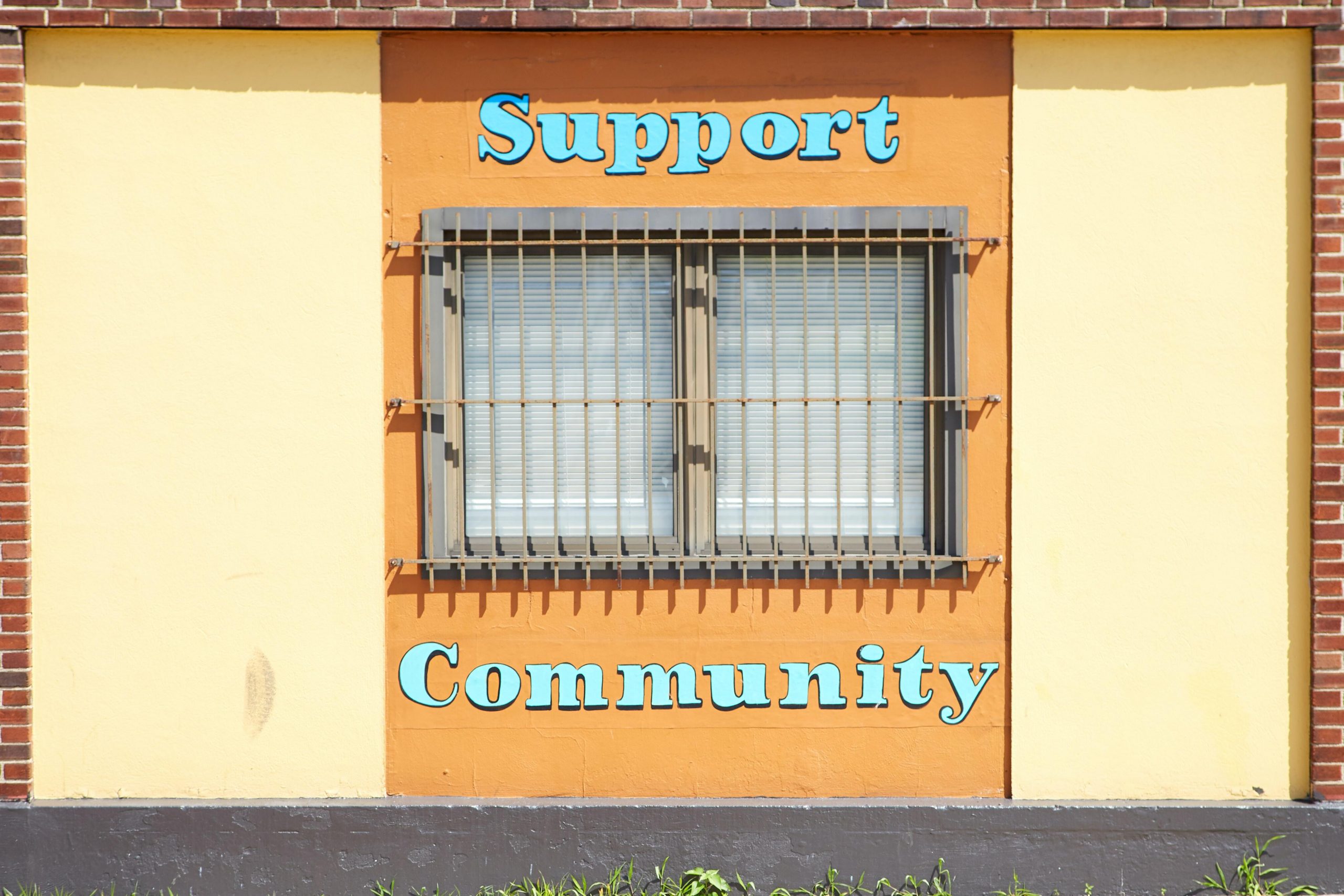
Oh, the humble Facebook Group. Commonly used to find a roommate, swap second-hand clothes and celebrate sporting stars, it was for many years overlooked as a powerful marketing tool in favour of curated Business Pages.
Then in 2018 Zuckerberg announced a shift in the Facebook algorithm to promote ‘meaningful social interactions’. As a result, users started seeing less marketing content, and more posts from their friends, family, and groups.
Many social media marketers were concerned – what did this mean for organic social reach on brand pages? Would we need to boost every brand post with paid spend? The short answer was, yes. Brands would soon need to invest in sponsored content to reach their audiences through Pages.
But a spanner in the works can lead to new user behaviours, and in this case, the algorithm shift brought about the rise in the Facebook Group.
In 2020, the Facebook group is a strong social media tool for brands to build engaged online communities and increase affinity with their customers. But is building a Group the right strategy for your brand? In this post we’ll help you answer this question by providing a deep dive on the use of Facebook Groups for marketing.
What is the difference between a Facebook Group and Facebook Business Page?
There are a few key differences between a Facebook page and group:
Firstly, while anyone on Facebook can interact with content shared on a public Page; on Groups, you can only engage with content once you’re a member. You can become a member by joining without approval (on public groups) or by being vetted by group admins (for private groups). This higher barrier of entry is fundamental to the Group environment and is a key reason that Groups are known for building strong communities with a shared sense of belonging.
Group members and page followers also tend to display very different user behaviour. On Groups, posts tend to be more frequent, with multiple posts per day, often being posted by the group members themselves. On brand pages only the brand posts, and it is typically less frequently. Because the conversations on Groups are peer-to-peer, they tend to receive more comments vs pages where the conversation is predominantly brand-to-community.
Another key difference between the Facebook Group and Page, is Group administrators can be both a business page account and an individual Facebook user, such as an employee or founder.
An example of this is the Australian’s financial advice podcast She’s On The Money. Its Facebook Group is managed by founder and podcast host, Victoria Divine. As the group admin, Victoria shares resources for members, such as budget spreadsheets, news articles and personal advice. She also interacts on community members’ posts.
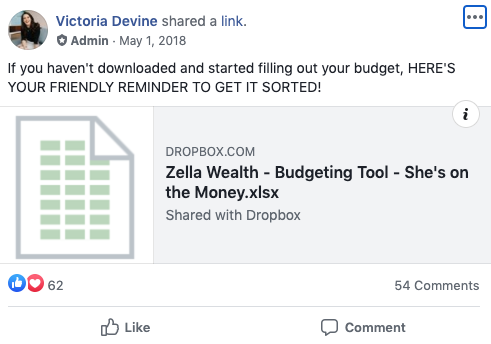
Having an individual manage a Facebook Group can make the community feel more personal. Group members are interacting with real people rather than a ‘brand’, which in turn, helps build a tangible relationship between a customer and the business.
It’s important to note that Groups do have some functionality limits to consider. For instance, you also can’t boost posts on a Group with paid, which means your Group posts will rely exclusively on organic reach with members.
When would my brand opt for both a business page AND a group?
The membership requirements can mean that those who are not passionate about a brand, are less likely to join a Group. This has led many to expand their social media mix to include both a public page, and a Facebook Group.
Take Sharesies (a Kiwi investing app and a Sling & Stone partner) as an example.
They have a group which requires a number of questions to be answered prior to being approved, such as:
– How long have you been a customer?
– What is your motivation for joining the group?
This increased vetting has led to a highly-engaged community where investors share tips and seek advice from one another. It’s a smaller community of super fans who wish to engage in two-way conversations with other Kiwi investors.
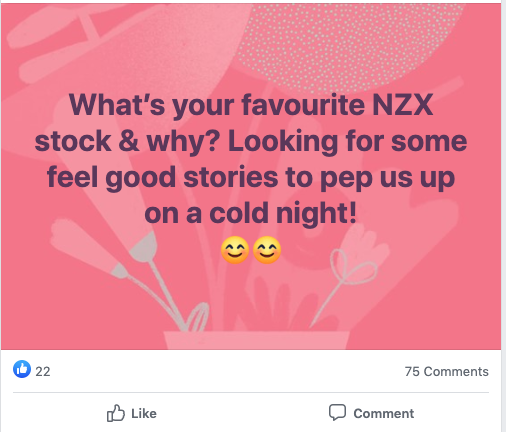
Sharesies then saves (pardon the pun) it’s big brand announcements, blog posts and podcasts for it’s Facebook page.
Aussie wine club and delivery service Good Pair Days is another example of a brand with both a Business Page and a Group. On its business page it has 27K followers, and the brand shares a mix of promotional and educational content. On its public Facebook Group (called Good Pair Days Wine Lovers) it has less than 1,000 members, but a very active community that posts approximately five times per day.
Unlike the Sharesies private Group, the Good Pair Days’ Group is public but differs from the page by focusing the content around users who want to engage in wine discussions with one another.
There are also instances where a brand’s Group is bigger than the Business Page. An example is another of our partners, fitness-tech brand Zwift. The Zwift ANZ Business Page has 1.4K followers and the Zwift Oz Group (run by Zwift brand ambassadors) has 6.5K members.
On the Zwift ANZ Group, all content is community-led . Even the moderators are not ‘Zwift’ employers, but rather, influential people in the cycling community and brand ambassadors who Zwift has tapped to run the page. Moderators share their own content promoting Zwift virtual tournaments, race recaps, updates, and fundraising drives for competing teams. Zwift members share their Personal Best Records and ask other members for advice on cycling equipment and recommendations.
On the Zwift business page, the brand shares product updates, live-streamed event content, race highlights and curated workout playlists. The page admin is active, replying to public comments and queries underneath the posts.
For all three of these examples, having a Page and a Group gives them the best of both worlds. They can share branded content and benefit from the discoverability of a Brand page while tapping into an engaged community of super fans via a Facebook Group.
What kind of content should a brand share on a Group?
As a Group admin, your main role is to spark and facilitate community discussion. When first establishing a Group, admins will need to participate and post more regularly, to lead by example. However, it’s best practice for brands to take a backseat once the community is sharing content on their own.
Let’s look at meditation and mindfulness app Calm and the types of content shared in its Group by both admins and community members.
The first thing you notice is the admin posts are few and far between. The majority of content is shared by community members and includes relaxing photos and videos, as well as members asking for tips and sharing their own quotes.
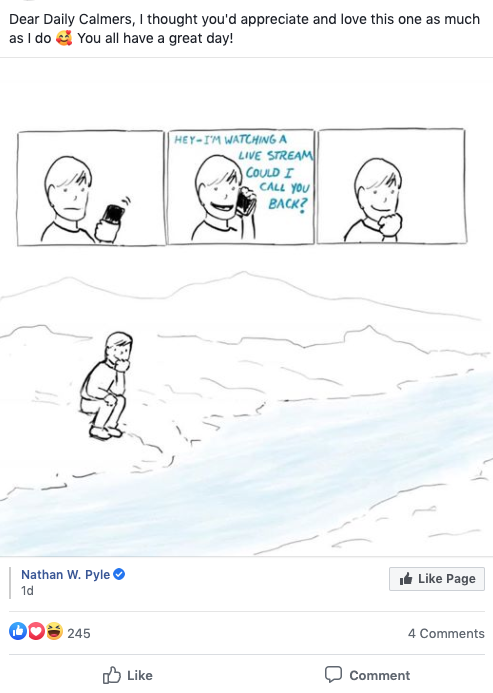
Matching the tone of the community, the content shared by the Calm admin is often personal about their own meditation journey. When there is a need to share brand related content (ie announcements) this is also done by employees vs a branded handle, putting a face to the people who work behind the brand.
This strategy can help community members feel more comfortable sharing their own experiences and leads to a supportive page, where members inspire each other.
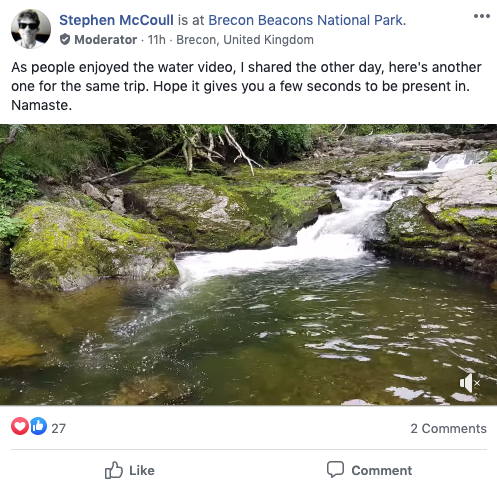
When a brand admin is posting, there are a few tried and true content formats that work well to prompt community participation. These include polls, surveys, and questions – all which make for easy discussion and comments. Brand admins can also use content series, like Sharesies Tuesday Tip Jar, so that community members see behaviour repeated, making it easier for them to know how to participate.
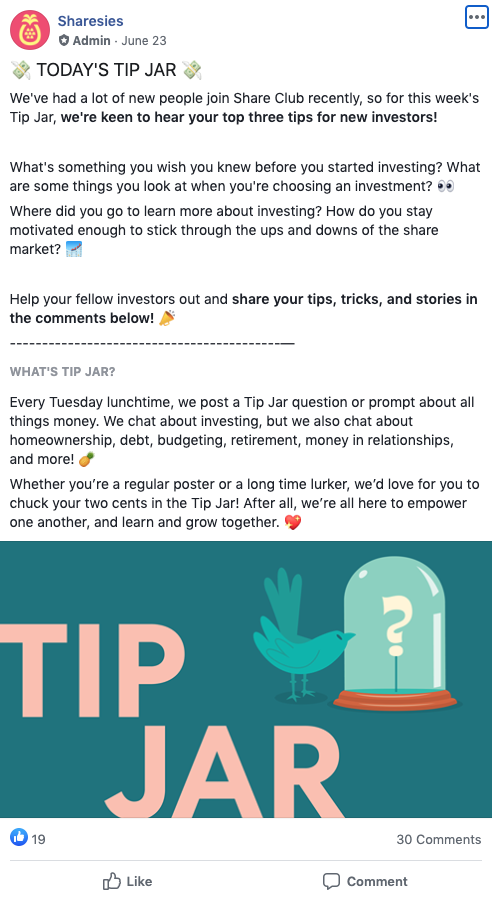
There are also a few types of content that brands should steer clear of sharing in their Groups. These include advertising content such as digital ads (both video and image), or any overly branded content that feels more like marketing assets.
When should I opt for only a Facebook Group?
There are a few times when Group-only strategies make sense:
– You have limited resources to create branded content
– Your audience isn’t active on Facebook but uses Facebook Groups and Messenger (eg Gen Z)
– Your brand’s service or product is particularly private or personal in nature. You have a very niche or targeted audience with a desire to build community over acquisition or awareness
Ready to start a Facebook Group? Be sure to consider the below checklist.
– You have sufficient resources to staff your group: admins to monitor membership requests and community posts (ideally outside the 9-5 work day)
– Your brand is comfortable taking a backseat and allowing community members to have a voice
– You have brand love: Not everyone needs to love your brand, but we wouldn’t recommend a Facebook Group for a brand that may be inundated with real-time complaints.Groups are not ideal customer service channels.
What are some Facebook Group alternatives?
Many brands find that super-fans will create a Facebook Group to unite their customers, share tips, or simply ‘nerd-out’ without input from your brand at all. An example is educational mobile app Coursea.
Coursera has a Business Page and also has a Coursera Alumni Group. The Group has 65,000 members and an average of 8 posts per day. There are 7 admins, not one of which is a Coursera employee.
In the event that your fans and ambassadors have taken it upon themselves to start a group, lean into it. Rather than trying to compete by beginning your own group, or hoping to replicate that behaviour on a page, speak with the existing group admins about ways the brand can reward the community they have built. For example, your brand could offer first-look or product reveals to group members or create special group offers to thank members for being super fans. The key is to look at how the brand can give back to the community and increase their advocacy, vs looking at a group like this as an opportunity to go hard on pushing marketing messages.
To recap, managing a branded Facebook Group is no light lift, and your admins will need to be OK being both active and reactive. However the pay-off is worth the investment. A group can give you a genuine, engaged community of people who love your brand and want to connect with others who love your brand too.

